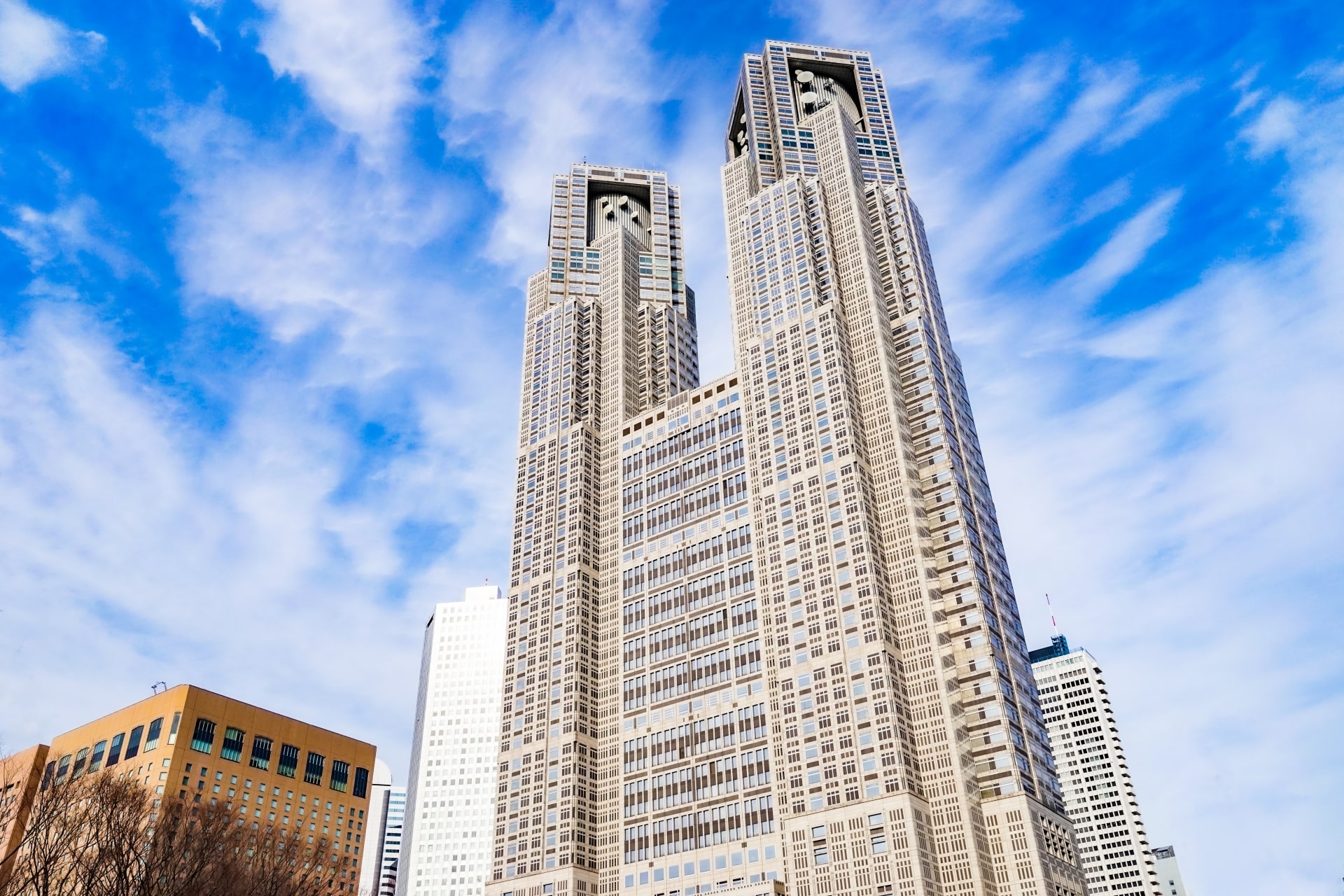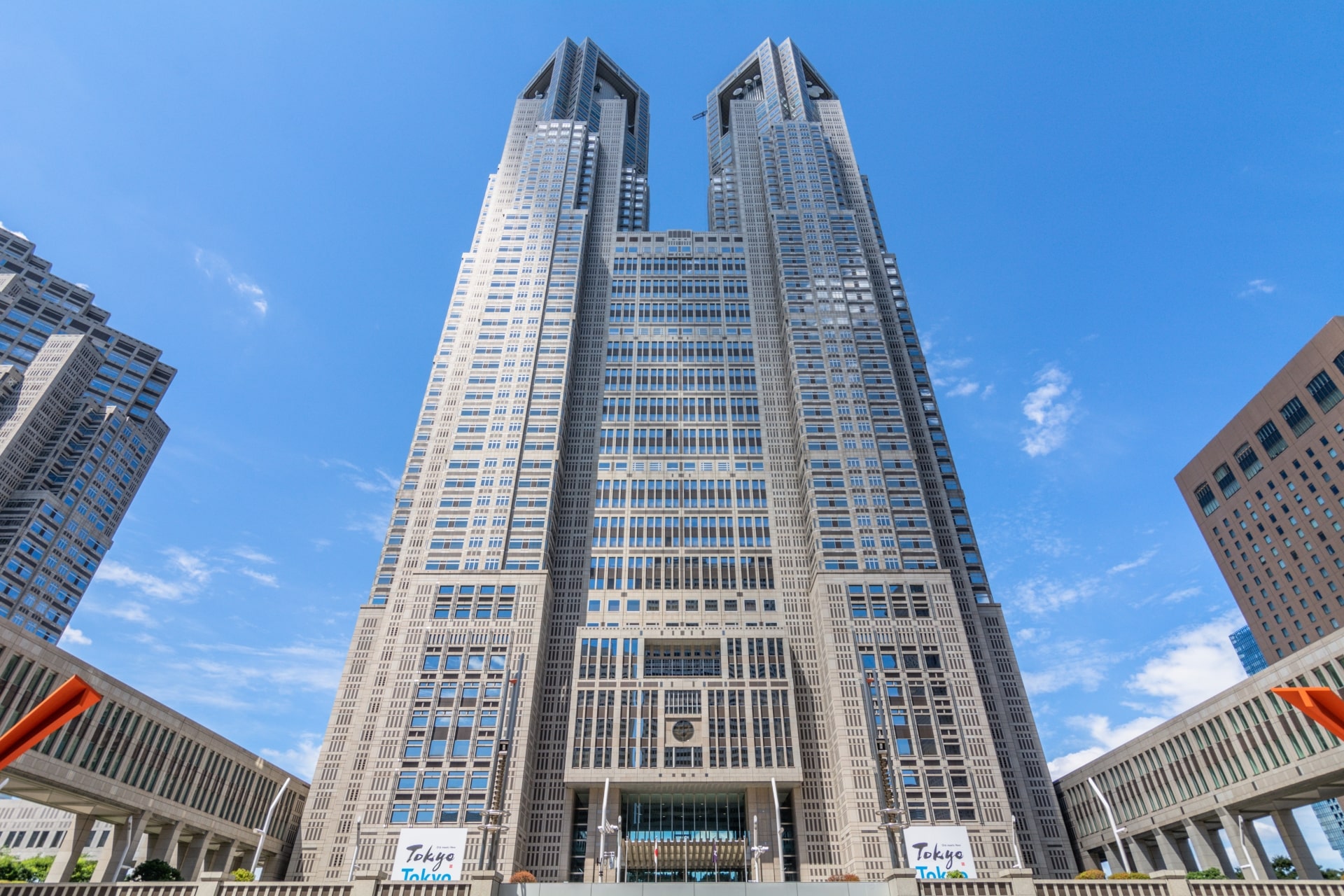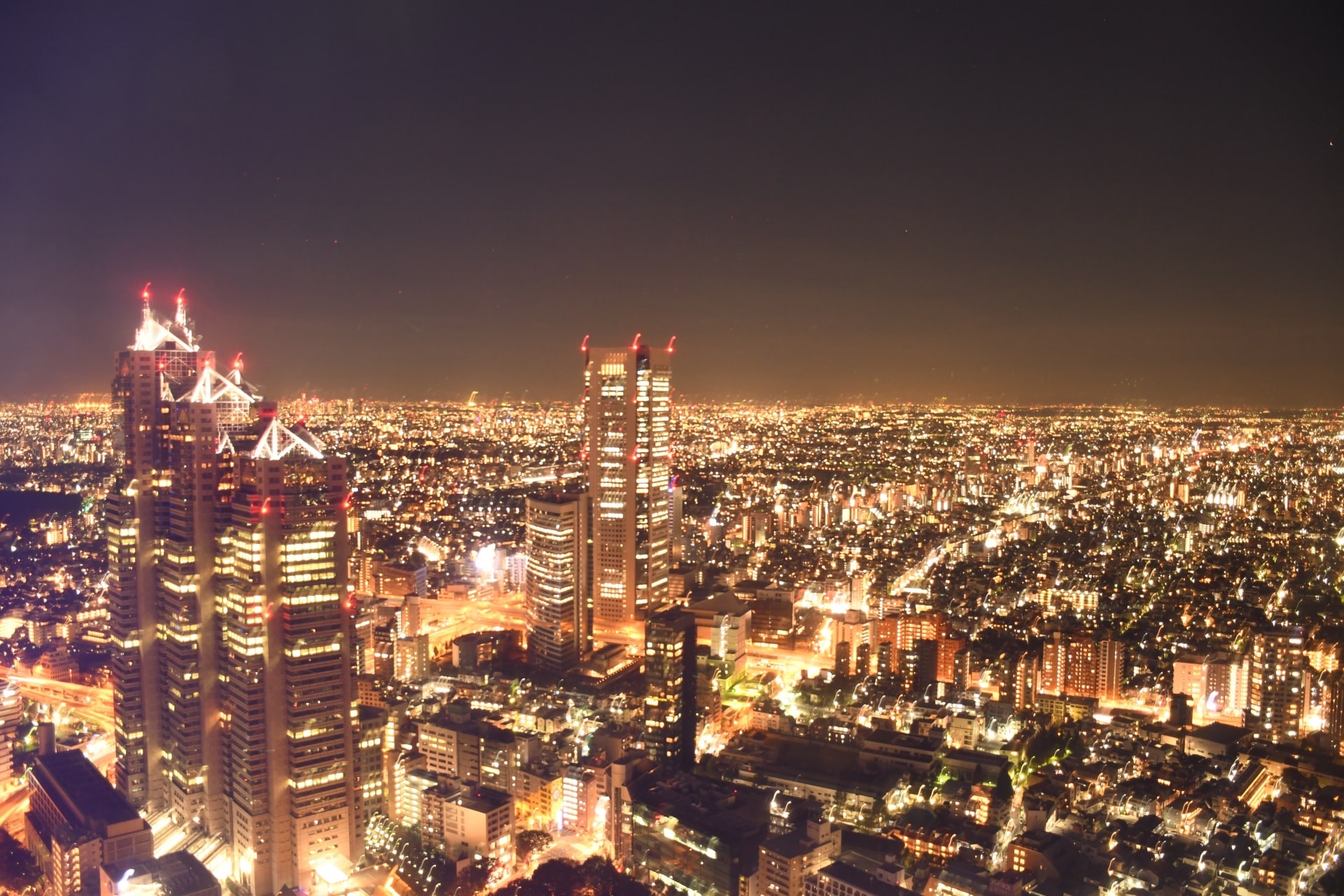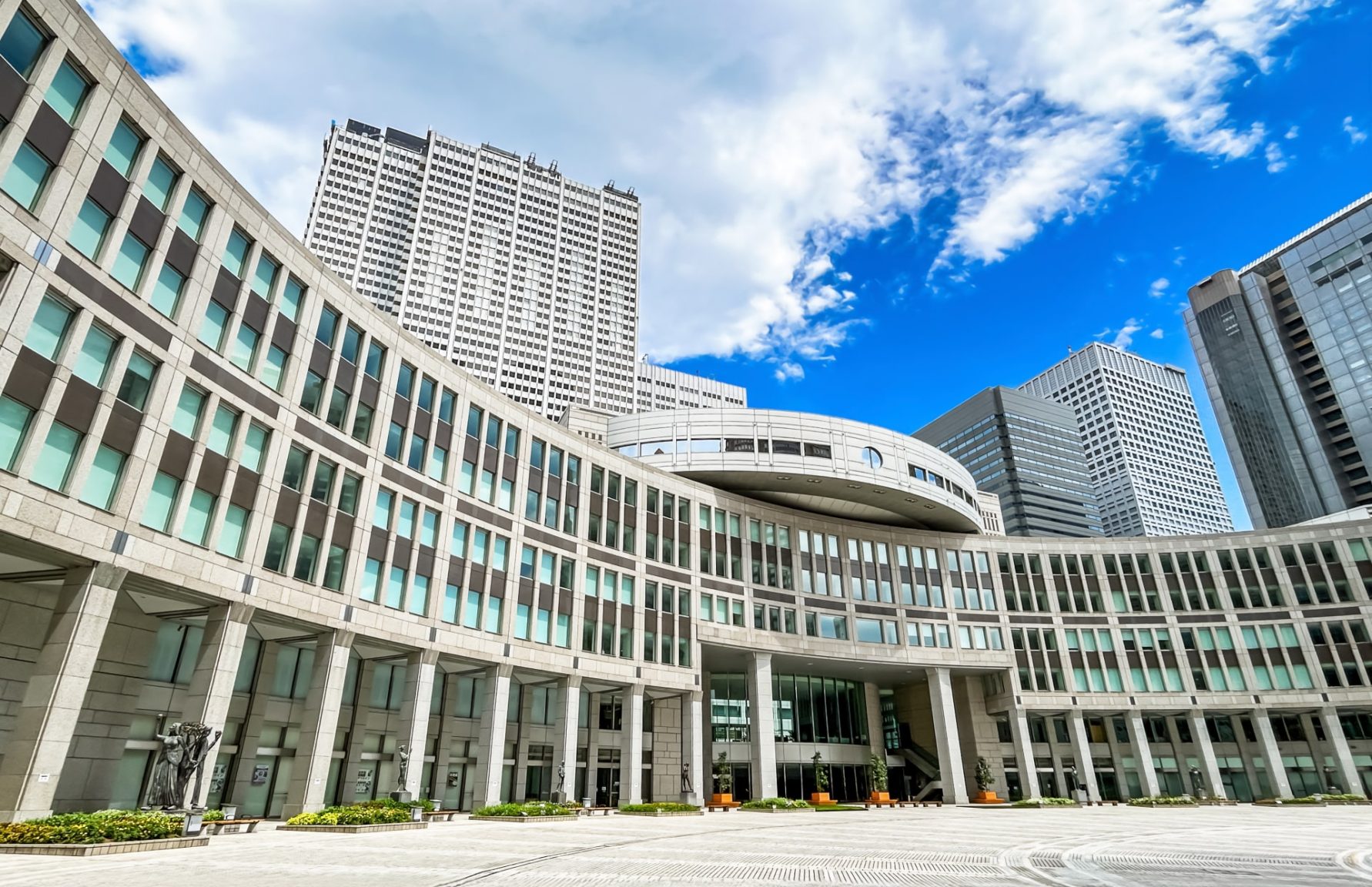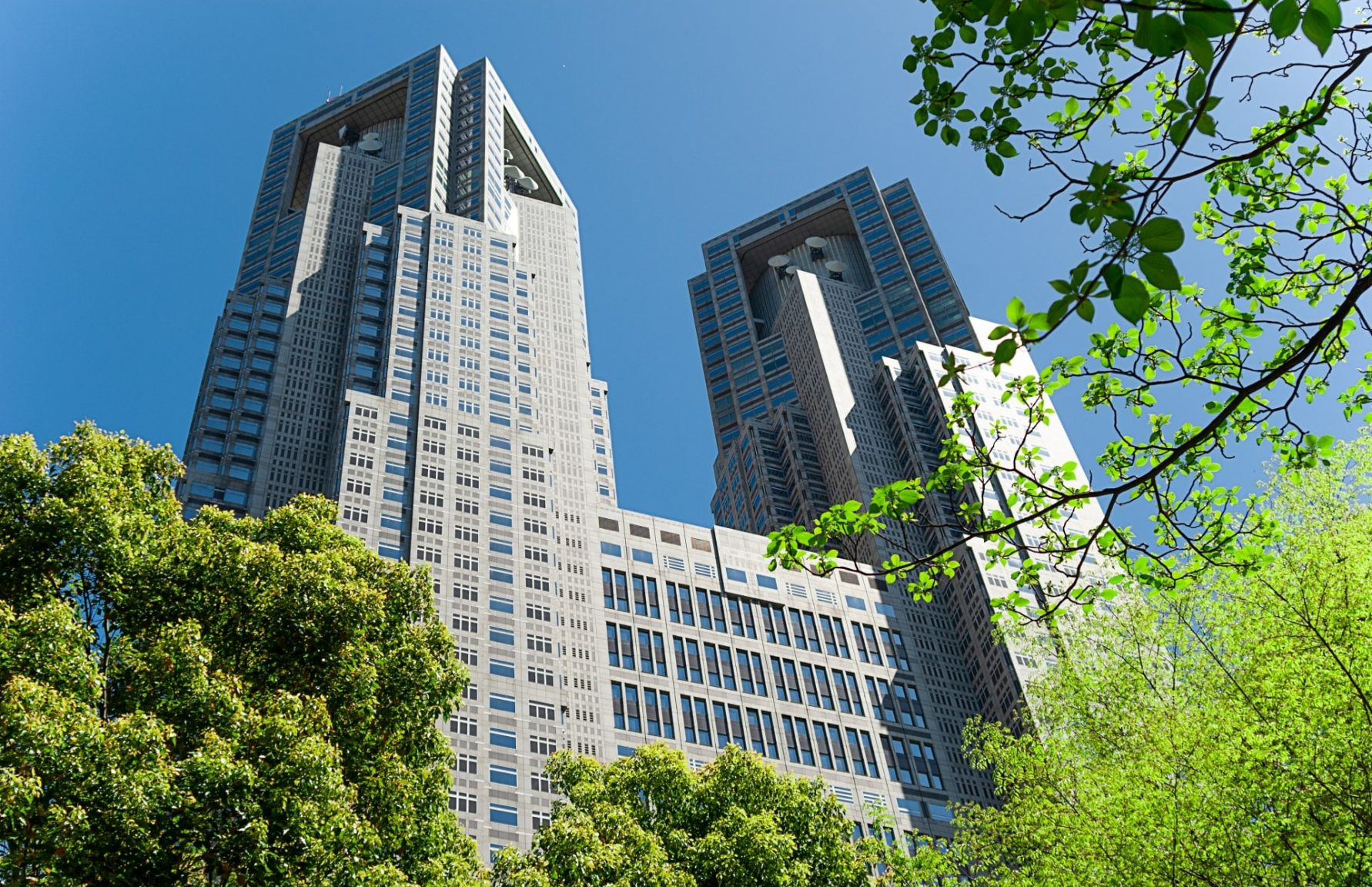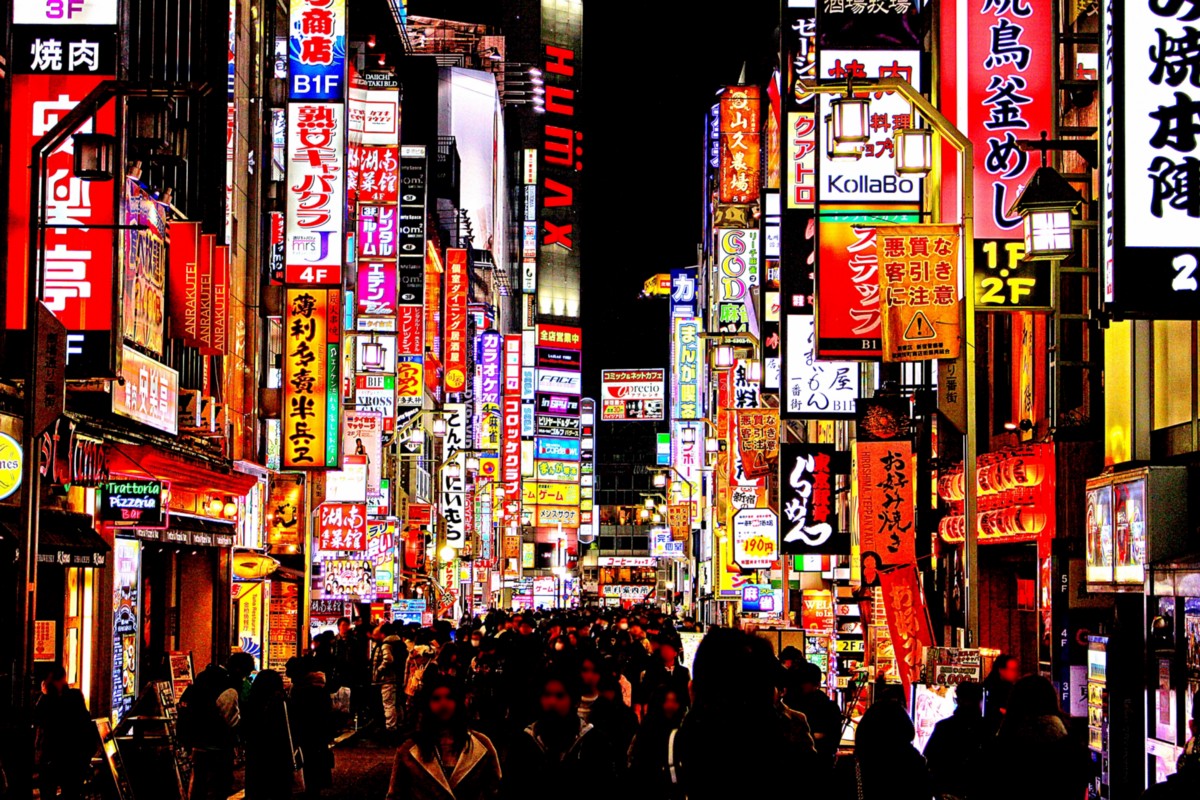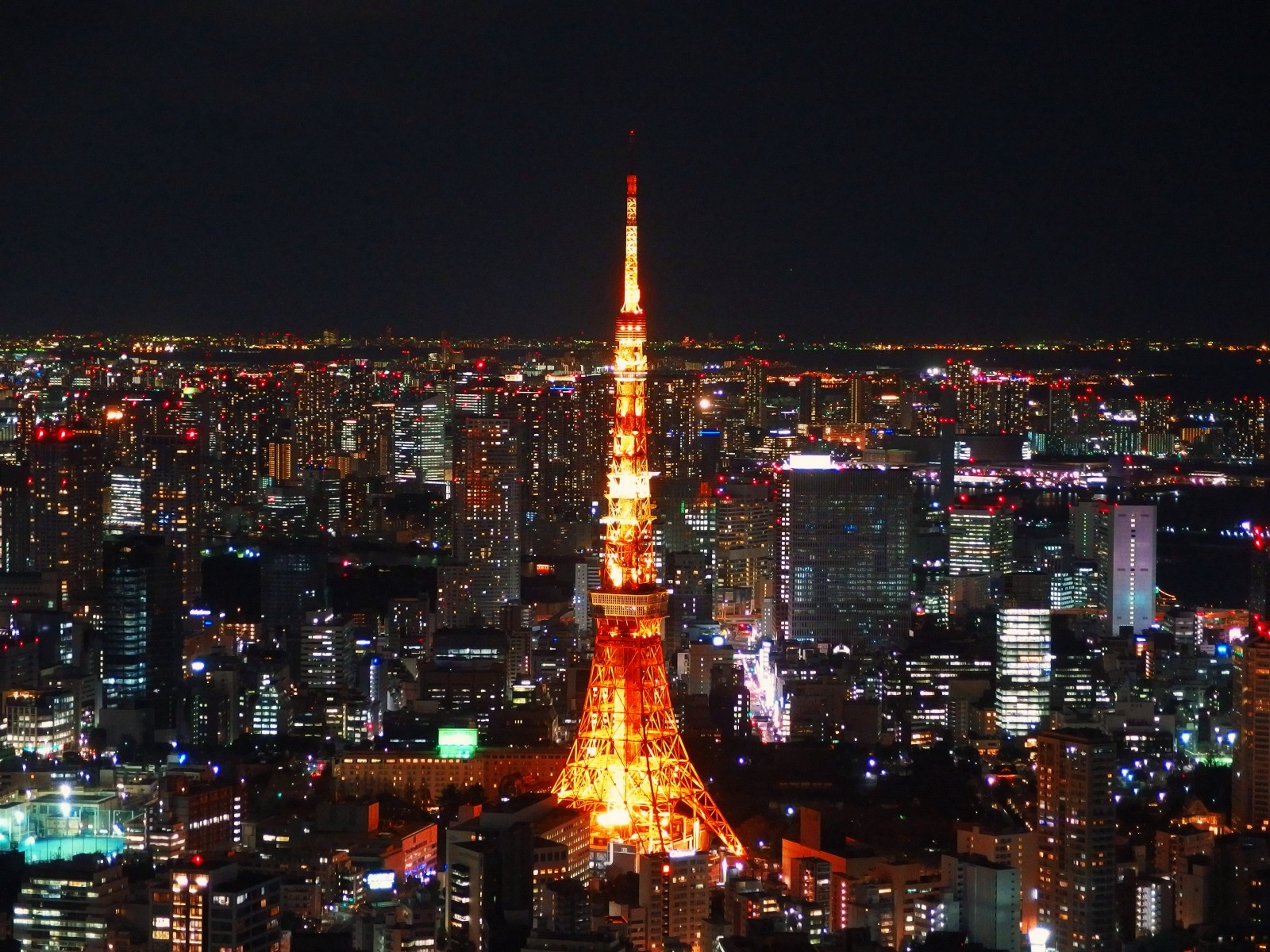Tokyo Metropolitan Government Building
Tokyo Metropolitan Government Building in Shinjuku: The best spot to enjoy the night view of Tokyo for FREE!
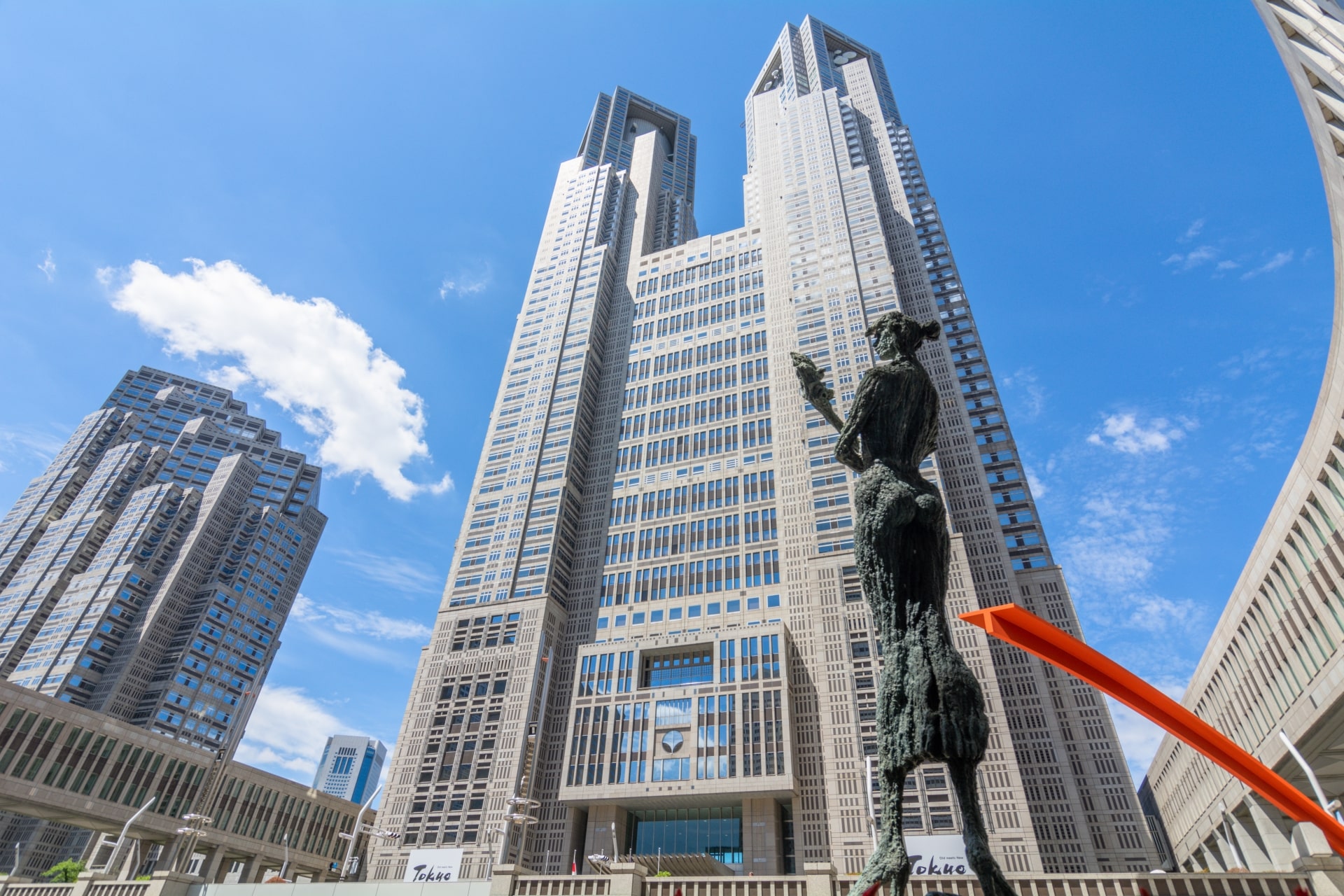
Standing tall in Shinjuku, the Tokyo Metropolitan Government Building offers visitors a unique opportunity: panoramic city views from its free observation decks. On clear days, you might even catch a glimpse of Mount Fuji in the distance, adding an extra layer of wonder.
This architectural marvel not only houses Tokyo’s government but also stands as a vibrant symbol of the city’s modern identity. Whether you’re an architecture enthusiast or simply curious about one of Tokyo’s most iconic landmarks, the building invites you to explore its impressive design and enjoy breathtaking vistas of the dynamic urban landscape.
For a general overview of the Shinjuku area, don’t miss our All-in-One Guide to Shinjuku.
What is the Tokyo Metropolitan Government Building?
Located in Shinjuku, the Tokyo Metropolitan Government Building (東京都庁舎) serves as the central administrative hub for Tokyo. As the headquarters of the Tokyo Metropolitan Government, it houses key offices that manage the city’s civic affairs and urban planning initiatives. It governs not only the 23 wards but also the cities, towns, and villages that constitute the whole Tokyo Metropolis. Designed by the renowned architect Kenzo Tange, this imposing structure is a standout in Tokyo’s skyline, reflecting both modern design and cultural symbolism.
Known as simply “Tocho” among tokyoites, not only does it function as a vital center for governance, but it has also evolved into a popular destination for visitors. The building attracts tourists with its free observation decks, where one can enjoy expansive views of Tokyo’s dynamic urban landscape. The building plays a dual role in embodying the spirit of modern Tokyo while offering an accessible experience for all.
History and Design
Constructed between 1988 and 1990 and officially opened in 1991, the building was designed by the renowned architect Kenzo Tange. His design, which echoes elements of Gothic architecture (with its twin towers and faceted forms reminiscent of a modern reinterpretation of the Notre Dame style), was chosen after a competitive process aimed at replacing the older, fragmented administrative offices in Marunouchi.
Notably, the building’s construction cost was substantial, and its design not only consolidated administrative functions but also served as a bold symbol of Tokyo’s post‑modern urban identity. The First Government Building reaches a height of approximately 243.4 meters with 48 floors (plus three basement levels), while the Second Government Building is slightly shorter.
Architectural and Structural Details
Key architectural facts include:
-
Height and Floors: The First Building stands at 243.4 meters with 48 floors, whereas the Second Building is 163.3 meters tall with 34 floors. The Metropolitan Assembly Building, part of the same complex, adds further to the architectural ensemble.
-
Construction Method: The project employed modern techniques, including a rapid construction period of roughly 33 months, and made extensive use of pre‑fabricated elements (PC panels) and efficient stacking methods.
-
Design Influences: Tange’s work incorporated inspirations from both Western and Japanese aesthetics, reflecting a careful balance between modern efficiency and cultural symbolism.
Tokyo Metropolitan Government Building Observation Deck Hours & Best Time to Visit
The Tokyo Metropolitan Government Building features two observation decks, located on the 45th floor of each tower: the North Observatory and the South Observatory. Both decks are 202 meters high and offer panoramic views of the city, all free of charge!
Visitors can enjoy shops and cafes in each observatory, making it a highly popular destination for both Japanese and international tourists. The building itself is an architectural highlight, and guests can take in magnificent views of Tokyo without any cost.
Operating Hours:
-
South Observatory: 9:30 AM to 10:00 PM (last admission at 9:30 PM).
-
North Observatory: 9:30 AM to 5:30 PM (last admission at 5:00 PM).
Please note that observatory hours may vary due to maintenance or special events. It’s advisable to check the official website for opening schedules for the latest information before planning your visit.
Best Time to Visit:
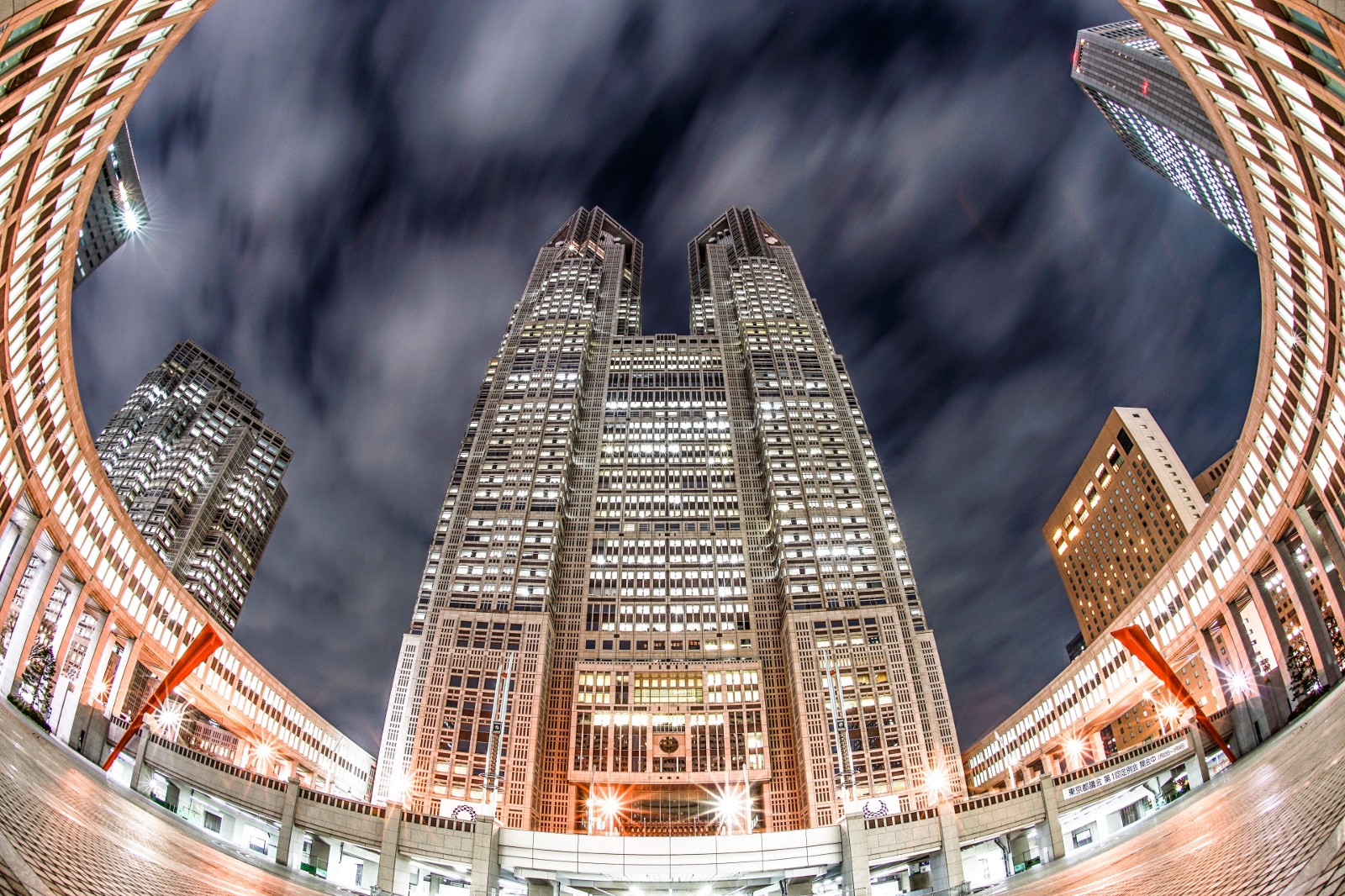
For optimal views, consider visiting during the early morning in autumn and winter when the air is cooler and clearer, offering less hazy vistas. Sunset is also a popular time, providing the chance to witness the city’s transformation from day to night and, on clear days, a view of Mount Fuji.
Keep in mind that sunset hours can be crowded. Arriving earlier can help secure a good viewing spot.
TOKYO Night & Light: A Dazzling Evening Spectacle
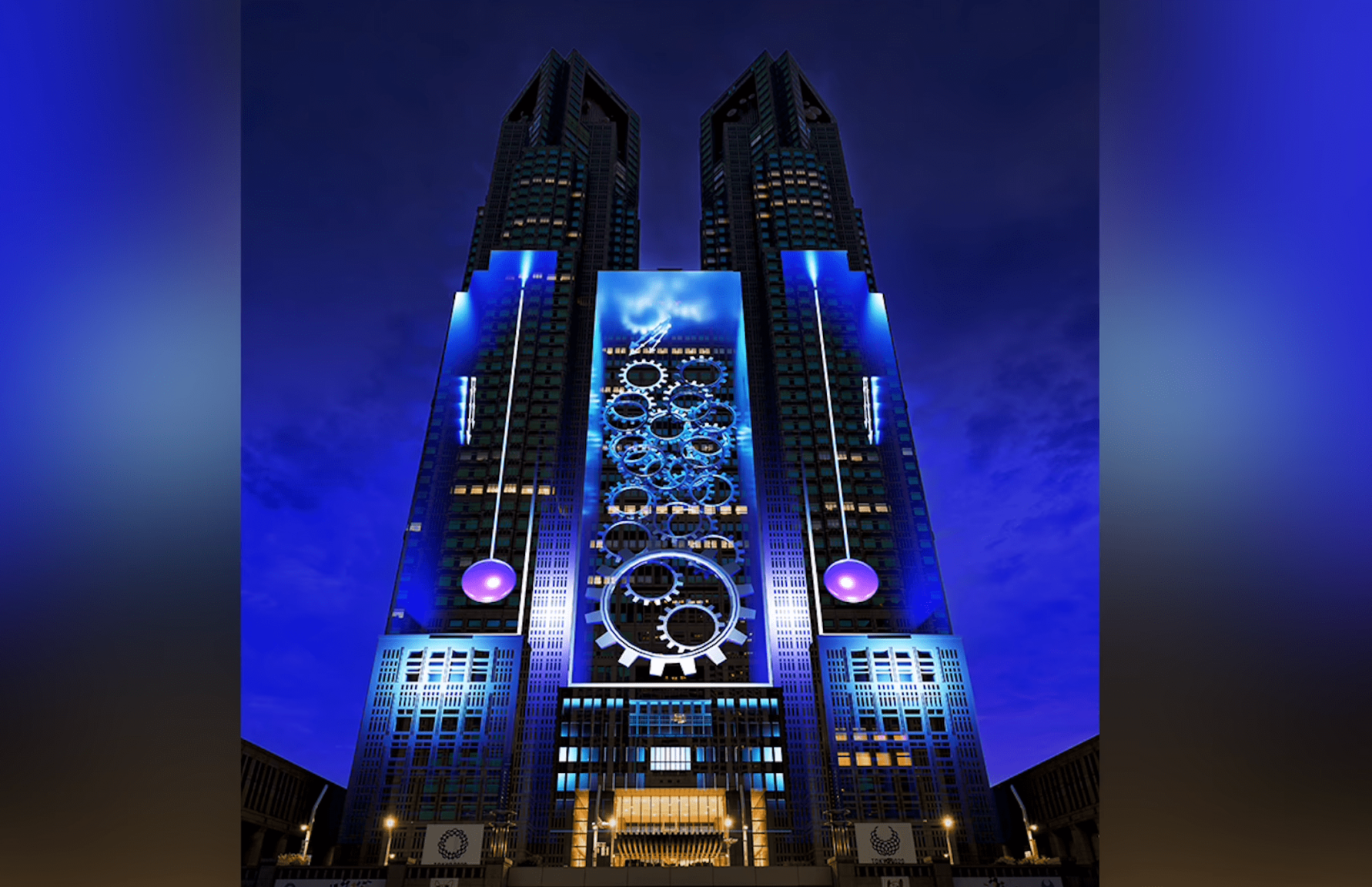
Since February 2024, the Tokyo Metropolitan Government Building has been hosting “TOKYO Night & Light,” a nightly projection mapping event that transforms its eastern facade into a vibrant display of light and sound. This collaboration with the art collective teamLab aims to enhance Tokyo’s nightscape and offers visitors a unique visual experience.
More information: TOKYO Night and Light: Largest Projection-mapped at Shinjuku
Citizens’ Plaza: A Cultural and Artistic Hub at the Tokyo Metropolitan Government Building
The Citizens’ Plaza (東京都庁都民広場) is an expansive open space located at the base of the Tokyo Metropolitan Government Building in Shinjuku that’s well worth your visit if you have time. This plaza serves as a communal area where residents and visitors can gather for various events and activities. Adorned with numerous public art installations, including sculptures by renowned artists such as George Rickey and Bukichi Inoue, the plaza is a great example of grand architecture mixed with artistic expression.
Visitor Information
Ground Floor Visitor Hub: Tokyo Tourist Information Center
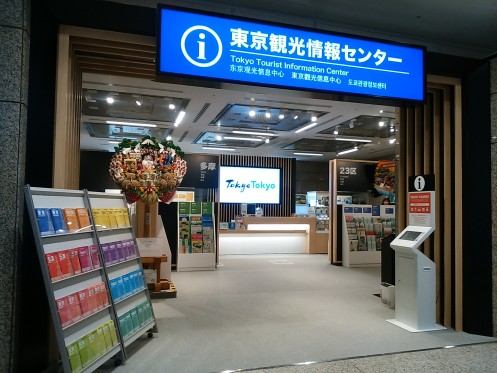
Although the main attraction is the observation deck, the Tokyo Tourist Information Center is located on the ground floor of the building, and it’s an excellent resource for visitors, so it’s advisable to stop by when you visit. This free service is run by the Tokyo Metropolitan Government and serves as a one‑stop hub for both domestic and international visitors.
Here, you can pick up maps, brochures, and expert travel advice in multiple languages, including Japanese, English, Chinese, and Korean. If you’re looking for recommendations on local attractions or practical tips for navigating Tokyo, the center offers up‑to‑date information and personalized guidance to help make your visit seamless and enjoyable.
Accessibility
The Tokyo Metropolitan Government Building is designed with accessibility in mind. Elevators provide access to the observation decks on the 45th floor, and accessible restrooms are conveniently located near the elevators. Staff members are readily available to assist visitors with disabilities, ensuring a comfortable experience.
Dining Options
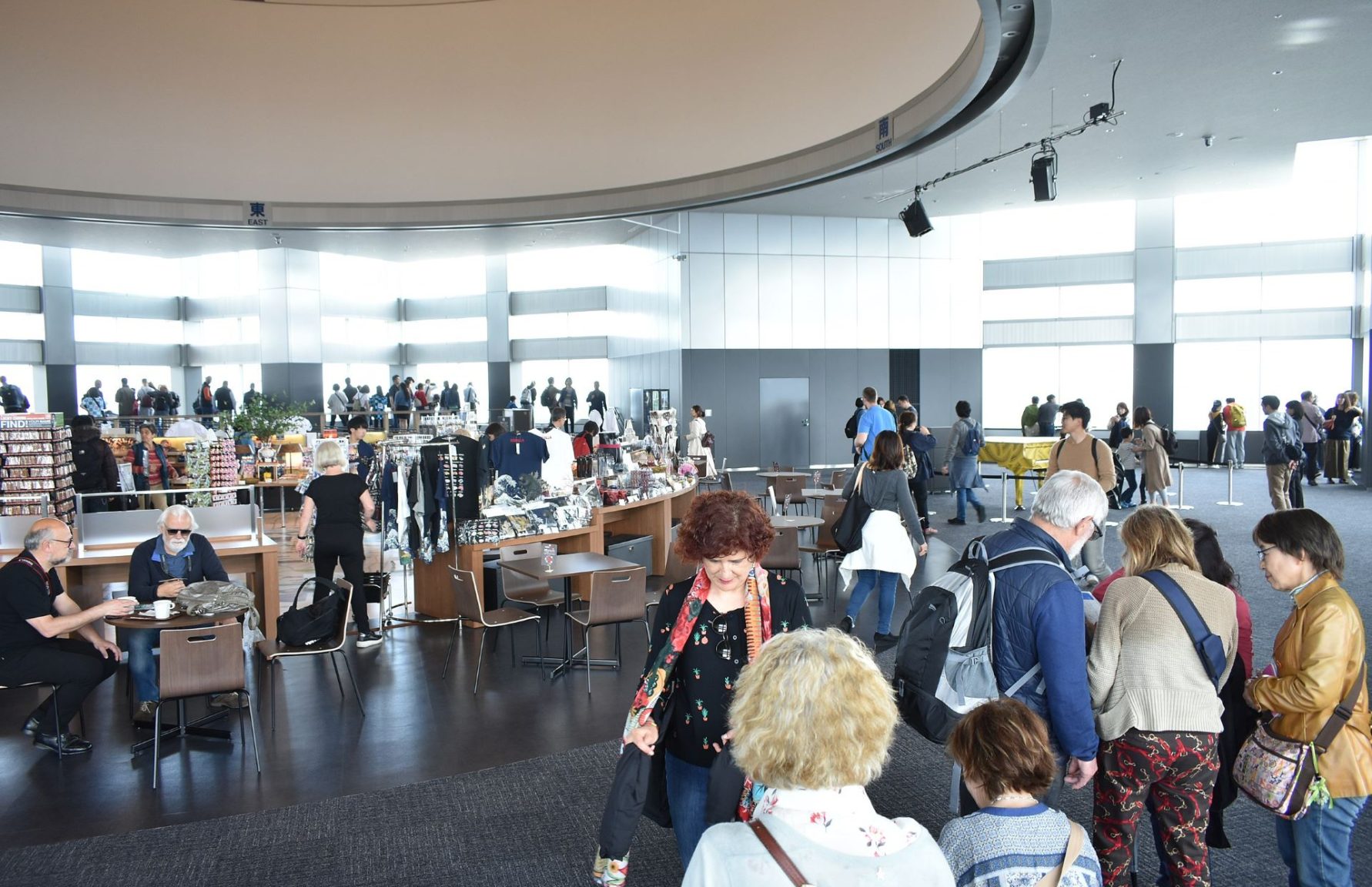
Visitors can enjoy refreshments at the cafés located within the observation decks:
-
South Observation Deck: “Tokyo Cafe 202” offers a selection of drinks and light meals.
-
North Observation Deck: “Good View Tokyo” provides a relaxing atmosphere with panoramic city views.
Souvenir Shops
Both observation decks feature souvenir shops where visitors can purchase Tokyo-themed gifts:
-
South Observation Deck: “TOWNGATE CORE TOKYO 都 SEEN” offers a variety of souvenirs.
-
North Observation Deck: “Hakuhinkan” provides an array of unique items.
Other Amenities:
-
Piano Performances: The South Observation Deck houses the “Tokyo Metropolitan Government Piano,” available for anyone who wishes to play it during designated hours.
Additional Visitor Tips:
-
Plan Ahead: Check the weather forecast before your visit since clear skies yield the best views, particularly if you want to see Mount Fuji. Arriving early can help avoid long elevator lines, especially during peak hours like sunset. On the other hand, if you want to see the sunset and then enjoy the evening city lights, then it might be worth the wait.
-
Stay Updated: Follow the building’s official social media or website for real‑time updates on temporary closures, special events, or changes in operating hours.
-
Combine Your Trip: Consider pairing your visit with nearby attractions in Shinjuku, such as Shinjuku Gyoen National Garden or local shopping areas.
-
Multilingual Support: If you need assistance, note that staff and signage are available in several languages, making it easier for international visitors.
- Cash & Card: While entrance is free, be prepared with cash or cards for purchases at cafés or souvenir shops within the building.
How to Get to the Tokyo Metropolitan Government Building
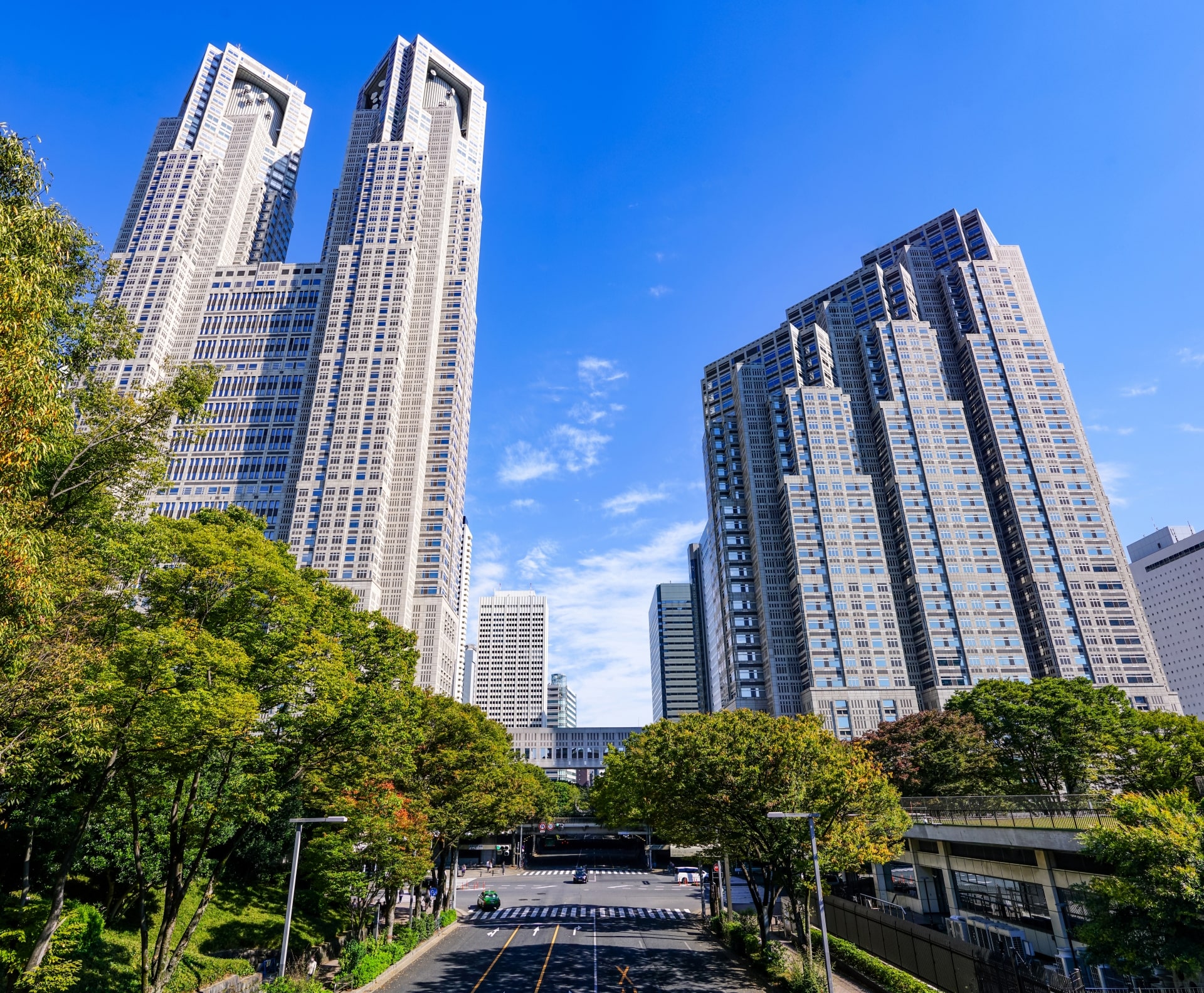
The most convenient option is to use the Toei Oedo Line. Tochomae Station is just steps below the building. One of the exits actually leads inside the building, but sometimes it may be closed. Other exits are just right beside the building, practically a 0-minute walk. Alternatively, if you arrive via Shinjuku Station, exiting from the West exit will place you within a comfortable stroll of about 10 or 15 minutes.
 Address Address |
2-8–1 Nishishinjuku, Shinjuku-ward, Tokyo |
|---|---|
 Price Price |
Free |
 Official Website Official Website |
https://www.zaimu.metro.tokyo.lg.jp/tochousha/goannai/tenbou |
Tourist Reviews of Tokyo Metropolitan Government Building Observation Decks
The Tokyo Metropolitan Government Building is a top-rated observation spot in Shinjuku, offering free panoramic views of the city from its 45th-floor observation decks. With a Google rating of 4.4 (5,677 reviews), a TripAdvisor score of 4.4 (5,543 reviews), and a Yelp rating of 4.5 (122 reviews), it is widely praised for its stunning skyline views without any cost.
A TripAdvisor visitor who compared it to Tokyo Tower shared:
“After spending a lot of money climbing Tokyo Tower, I came here in the evening for the 45th-floor observation deck. There was no wait for the elevator, and although a few people were looking at the view, it wasn’t crowded. The view was breathtaking—and completely free! There is also a small shop where you can sit and enjoy a snack or buy souvenirs.”
―from TripAdvisor
A Yelp reviewer appreciated the ambiance and convenience:
“The Tokyo Metropolitan Building is a great stop for any visitor. It offers an amazing 360-degree view of Tokyo. One observatory even has a free-to-play piano, which creates a beautiful musical background while sightseeing. There’s also a small cafe, souvenir shop, and clean restrooms. The elevators are fast, and staff help direct visitors in an orderly manner. Overall, a great place to visit!”
―from Yelp
For more articles about Japan, check these links!!
Written by
"The world is my oyster." As a dedicated globetrotter and hammock enthusiast, I’ve spent years chasing new experiences, collecting stories, and discovering the world’s most incredible destinations. Born and raised in Japan, I’ve always had a deep connection to my roots, but my love for adventure has led me to spend over a decade exploring countries across the globe—from culture-rich cities to remote hideaways.
Travel isn't just a hobby for me; it's a lifestyle. I'm constantly searching for new ways to fuel my wanderlust. Over the years, I’ve developed a wealth of knowledge and a treasure trove of tips that make traveling more enjoyable, practical, and meaningful.
Through my experiences, I've come to appreciate not only the beauty of travel but also the importance of understanding diverse cultures, embracing the unfamiliar, and stepping out of my comfort zone. My travels have shaped who I am today, and I’m excited to share those lessons with others.
With Japan Web Magazine, I aim to offer practical advice, insider tips, and firsthand stories that help travelers navigate their journeys to Japan or setting off on a global adventure. From hidden gems in Japan to travel hacks that make any trip smoother, I hope my insights inspire you to embark on your own adventures and make the most of every moment. Let’s explore the world together!
You can also find my stories here ▶ https://medium.com/@nahobm





